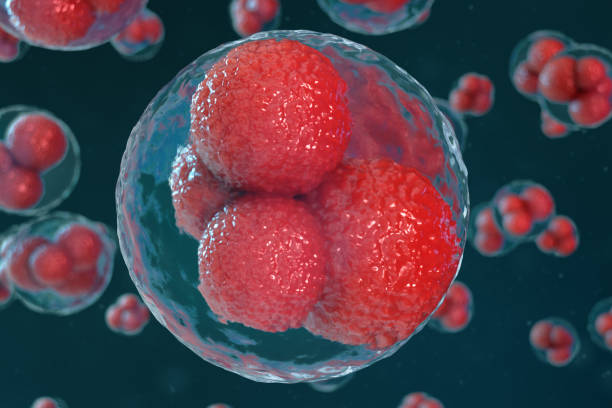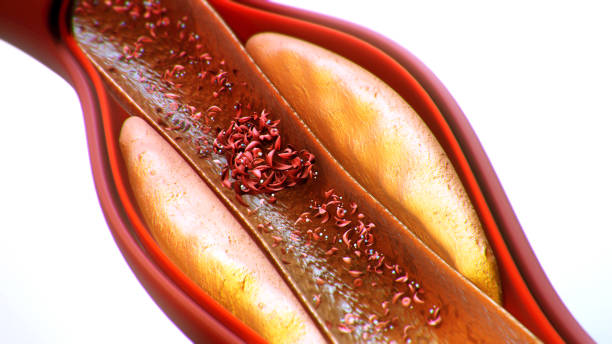For nearly two million Americans living with Type 1 diabetes (T1D), daily life is a relentless balancing act. Every meal, every activity, every dose of insulin must be carefully calibrated, all to prevent a host of potential health complications. But what if, instead of merely managing the disease, we could detect it before it strikes—and maybe even stop it altogether?
A team of researchers at the Perelman School of Medicine at the University of Pennsylvania might have just uncovered a breakthrough in this quest, one that could change the lives of millions. In a new study published in Science Immunology, they report finding key immune cells that could reveal Type 1 diabetes in its earliest stages—perhaps even before it begins to destroy insulin-producing cells in the pancreas.
For the first time, the team has caught the immune system “in the act,” as Golnaz Vahedi, Ph.D., a professor of genetics and co-corresponding author of the study, explains: “We’re not just seeing the wreckage after the immune system destroys insulin-producing cells in the pancreas. We are seeing the immune attack while the disease is still unfolding.”
This discovery offers more than just a new piece of the puzzle—it could be the first real chance we have to stop Type 1 diabetes before it starts.
Immune Cells in the Spotlight
In a study that analyzed nearly one million immune cells from the pancreatic lymph nodes and spleens of 43 organ donors—some healthy, some showing early signs of T1D, and some with active diabetes—the researchers uncovered something remarkable. They identified a distinct subset of CD4 T cells, a type of immune “helper” cell, which seemed to play a crucial role in the onset of the disease.
What makes these cells so intriguing is their ability to ramp up two proteins, NFKB1 and BACH2, which act like master switches, turning genes on and off in ways that accelerate the immune system’s attack on the body’s insulin-producing beta cells. In people with active Type 1 diabetes, this immune response is already causing damage to the pancreas. But what’s even more striking is that the same cell pattern appeared in people who were showing early signs of diabetes—before they had any noticeable symptoms. This suggests that the immune misfire that leads to T1D may begin much earlier than previously thought, potentially while the insulin-producing cells in the pancreas are still healthy.
“This suggests that the immune misfire begins early, potentially while plenty of insulin-producing beta cells are still healthy,” says Vahedi. If the disease could be detected at this early stage, it might be possible to intervene before the immune system has caused irreversible damage.
A Blood Test on the Horizon
But the study doesn’t stop there. The researchers found that the immune changes they identified in the pancreas were also reflected in the spleen, and these changes could even be spotted in blood samples. This is significant because it means that, in the future, a simple blood test could potentially flag individuals at risk of developing Type 1 diabetes long before symptoms like high blood sugar appear.
“The spleen changes detectable in blood mean we could monitor at-risk children, like family members of Type 1 diabetes patients, without invasive procedures,” Vahedi notes. This kind of early detection could be a game-changer for families affected by T1D, allowing doctors to monitor and intervene in a much more proactive way.
Imagine a blood test that could signal that a child is at risk for developing diabetes years before it happens, giving parents and doctors time to prevent or delay the onset of the disease. This is the kind of possibility that the research is opening up.
Even more exciting, the study suggests that by blocking the pathways fueling these rogue CD4 T cells, we might be able to delay or even prevent the disease altogether. While much work remains to be done, the researchers are hopeful that these findings could lead to new therapies aimed at stopping Type 1 diabetes before it takes hold.
The Gift of Life Behind the Discovery
This groundbreaking research wouldn’t have been possible without the generosity of organ donors and their families. The team studied pancreas and lymph node tissues donated by deceased organ donors, with the research supported by the Gift of Life Donor Program and other collaborative efforts.
“Every dataset represents countless late nights and a donor’s gift,” says Robert Faryabi, Ph.D., an associate professor of Pathology and Laboratory Medicine and co-corresponding author of the study. “It’s collaborative science at its best—surgeons, scientists, families, and funders making the impossible possible.” The data collected from these donations have already made an immense contribution to the scientific community, and they will continue to inform future research. In fact, the team has made the data available to other researchers through a public database called PANC-DB, in partnership with institutions like Vanderbilt University, the University of Florida, and Stanford University.
The study is a reminder of the profound impact that organ donation can have—not just in saving lives directly, but in making possible advancements that could change the course of entire fields of medicine.
Why This Research Matters
The implications of this research are enormous. Type 1 diabetes is a chronic disease that millions of people live with every day, and its impact on individuals, families, and the healthcare system is significant. Until now, the only way to manage the disease has been to try to control blood sugar levels, which can be a constant struggle. But what if we could detect the disease before it begins, or even stop it in its tracks?
This discovery brings us one step closer to that possibility. By identifying the immune cells that trigger the destruction of insulin-producing cells in the pancreas, the researchers have opened up new avenues for early detection, prevention, and treatment. The potential for a simple blood test to detect Type 1 diabetes years before symptoms appear could change the lives of countless families, offering hope to those at risk and offering the first real chance to prevent the disease from ever taking hold.
As the team works to refine these findings and develop targeted therapies, the possibility of stopping Type 1 diabetes before it starts becomes more and more real. And for the millions of people living with the disease today, this research offers a powerful reminder that the fight against diabetes is not just about managing the disease—it’s about finding ways to stop it in its tracks.
More information: Maryam Abedi et al, Joint profiling of gene expression and chromatin accessibility in pancreatic lymph nodes and spleens in human type 1 diabetes, Science Immunology (2025). DOI: 10.1126/sciimmunol.adz0472
Maryam Abedi et al, Aberrant TNF signaling in pancreatic lymph nodes of patients with Type 1 Diabetes, bioRxiv (2024). DOI: 10.1101/2024.05.31.596885






